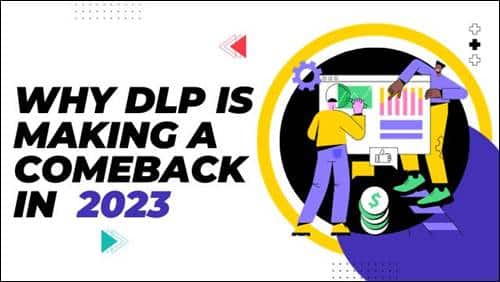
The history of data loss prevention (DLP) is fraught with challenges and struggles to keep up with advances in technology and the evolution of the threat landscape. While DLP solutions began as a necessary measure to protect sensitive enterprise data from being lost or leaked, they fell out of favor in the following years as organizations reckoned with the difficulties of effectively implementing and maintaining their DLP software. Successfully preventing data loss is a complex issue with no easy answer, but DLP is making a return as an important part of a robust and layered security and data protection strategy.
Pitfalls of Traditional DLP
One of the major challenges presented by traditional DLP solutions is a broad, signature-based detection system that leads to an abundance of false positives. Teams responding to the alerts created by DLP solutions can get bogged down by the volume of potentially risky actions. This means time, labor, and resources are being used to track and identify possible dangers that often turn out to be nothing, rather than contributing to other important matters in the organization.
The features of DLP solutions also have a tendency to hinder business operations, especially when they have a broad definition of what constitutes a threat. An “overly restrictive” DLP solution may block certain actions from occurring if it deems those actions to be a risk, even though the action in question may be necessary to properly perform a job. Combined with the likelihood of false positives, this means even innocuous user behaviors can be impeded.
Other reasons that DLP fell out of favor have to do with its inability to keep up with changes in the way data is collected, stored, and transmitted. Even a DLP solution that might have been highly effective when it was introduced would have to evolve to keep up with the growing popularity of cloud data storage, increasing numbers of employees in remote and hybrid working environments, and other advances in how data works.
While keeping up with technological advances is a struggle, possibly even more pressing is the need to keep up with trends in the threat landscape. The gaps in DLP’s ability to protect data—gaps that were present from the beginning—only continued to grow wider as data grew more and cybercriminals elevated their tactics to get around existing data protection measures. New attacks included exploits, hidden signatures, and the use of AI and other advanced technologies.
Factors Driving New Rising Popularity of DLP
DLP did not fall out of favor among businesses because the problems it was put forth to solve no longer existed, but because it largely failed to meet the needs of organizations without significant drawbacks. The growth of the cloud and remote working and the evolving methods of cybercriminals did not reduce the need for DLP. On the contrary, it highlighted the need for more dynamic and robust data protection that works in those contexts.
Therefore, it should come as no surprise that as DLP solutions adopt more features and expand their abilities, many organizations have begun to reconsider DLP as an option. Rather than fading into obscurity as a failed attempt at data protection, modern DLP systems include innovative features to better account for organizations’ needs and desires. These include abilities such as CASB functionality, user productivity supervision, screen capture protection technology, and the automatic detection of graphical fingerprints.
Another driving factor in the new growth of DLP is the introduction of data loss prevention as a service (DLPaaS) and as a managed service. A number of the problems with traditional DLP—especially utilizing it in a modern context—come down to the difficulties of properly implementing and managing the software. Many organizations simply lack the in-house expertise or resources to invest in the initial implementation or the ongoing maintenance of a DLP solution.
As organizations struggle to “cohesively understand data movement and know where sensitive data is at a given moment,” the importance of DLP continues to increase. The popularity of complex working environments, organizations using multiple software solutions and services, and constant growth in the sheer volume of data all draw attention to a distinct need for robust DLP solutions and features, and advances and innovations in DLP capabilities have been implemented to meet that need.
Conclusion
While DLP solutions set out to protect data against malicious and accidental theft, leakage, and loss, it soon became evident that the limited efficacy of DLP may not be worth the side effects. Over time, advances in data practices and cybercriminal tactics have only made it more difficult for DLP to effectively help organizations. However, these same factors have also contributed to a growing awareness of the importance of DLP. As DLP solutions and services made advances of their own in an attempt to catch up with the data and threat landscapes, many organizations have returned to relying on DLP as part of their security strategies.
Leave a Reply
You must be logged in to post a comment.